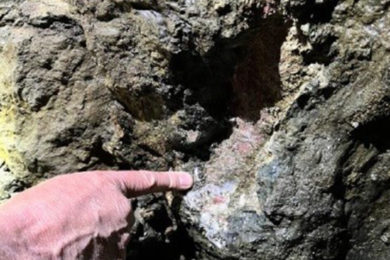More technology news that we were unable to include in the published surface haul trucks feature comes from OptAlert, which has a novel system that constantly measures operators’ alertness. The MOS solution alerts the operator of drowsiness, when it first begins and before it reaches dangerous levels. It works through a pair of innovative glasses worn by the operator. The glasses constantly measure the operator’s eye and eyelid movement. This information is analysed by an in-cab processor, determining the operator’s level of drowsiness in real time.
A visual and audio warning is triggered when drowsiness reaches an initial risk level. The warning is targeted during early stages of drowsiness, before driving errors happen and while an operator is still alert enough to take suitable precautionary measures, return to an alert state of mind and continue to work in a safe condition. This initial warning stimulates and provokes alertness without the need to stop the haul truck. In the fraction of instances where drowsiness continues to set in, a second warning is provided, highlighting the need to implement company specific fatigue policies.
Operation controllers receive real time systems information via the in-vehicle telematic system, enabling them to intervene when necessary.
OptAlert-MOS stores data about the operator’s fatigue risk levels – up to 720 operational hours. This information is then compiled into Fatigue Risk Profiling reports that can be delivered on an hourly/daily/ weekly/monthly basis. These risk profiles (per operator/per shift/per site) allow managers to fully understand the fatigue patterns within their operation and incorporate this information into Fatigue Risk Management Systems on an ongoing basis.
The differentiators of this system, the company says, include:
- OptAlertTM measures the driver’s physiological state of alertness objectively and continuously from minute to minute. It does not depend on theoretical calculations of the driver’s state based on the time of day and their unreliable subjective reports about previous sleep
- OptAlert warns drivers when the risk of a drowsy crash begins to rise, and does not wait until they are actually driving out of the lane, or falling asleep, which can be too late for preventive action
- OptAlert is not affected by environmental conditions. It works equally well in daylight and dark, and whether or not drivers use prescription lenses or sunglasses
- OptAlert, the company says, “is the only system in the market that has been scientifically validated. The Monash University Accident Research Centre, Austin Hospital, Swinburne University of Technology, Professor Charles Czeisler from Harvard University Medical School have all independently evaluated the effectiveness of Optalert in monitoring drowsiness.” BHP Billiton’s two year study into fatigue technologies concluded in 2007 that: “OptAlert has been identified as the leading technology solution for BHP Billiton to help detect operator drowsiness/fatigue.”
The OptAlert-SM solution has been implemented in mines throughout Australia, the USA, South America and South Africa.








